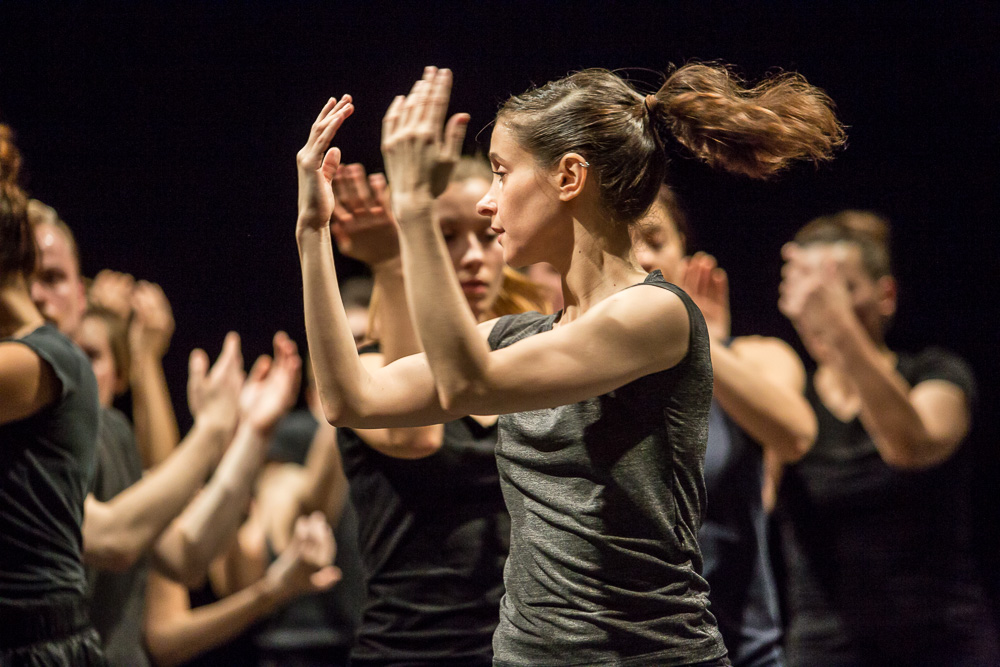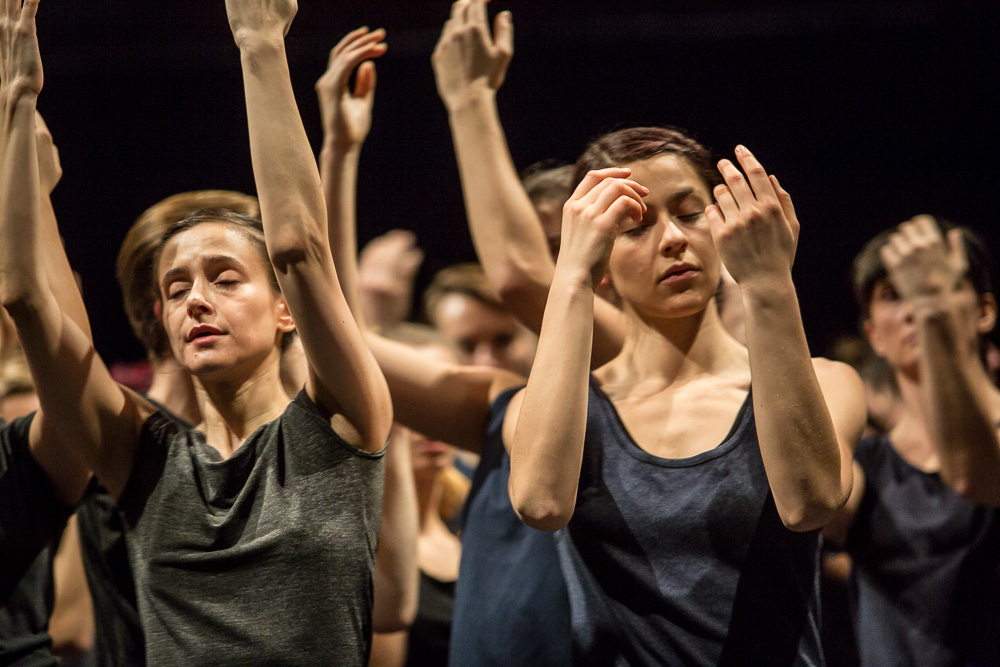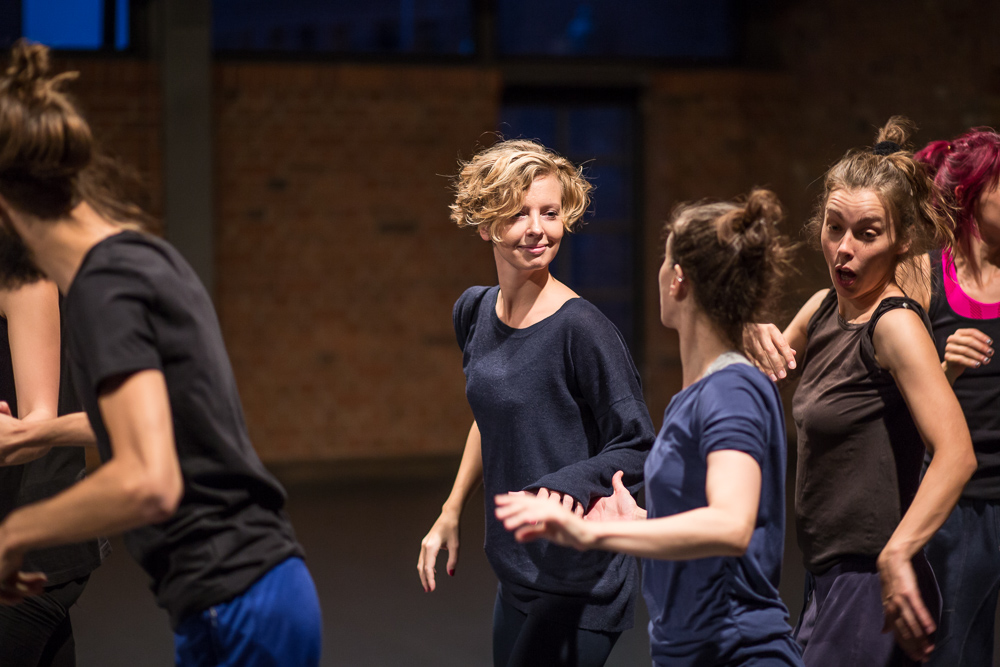2014
Collective Jumps
> dance
Isabelle Schad and Laurent Goldring address the topics of collectivity and resistance, investigating the possible relationships between freedom and form with a group of 16 dancers. Can the creation of an infinite, unified, monstrous body possibly become a site of resistance? The presentations are accompanied by a lecture, a film and an artist talk.
Collective Jumps
(Upon reading Hannah Arendt: On Revolution)
’The group’s body is made out of many. We exercise practices that have the potential to unite instead of individualize. We understand these practices as a relationship to oneself and to one another, as a pathway. These practices are biological ones, cellular ones, energetic ones. We look at freedom in relation to form: to form that is made of and found by an inner process and its rhythms. Rhythm creates the form. Therefore, there is multitude, multiplicity, subjectivity, and variation: variation within repetition.
We look at freedom as the essence of happiness. We experience happiness when the flow of movement can be done together and be maintained. We look at freedom that is guaranteed once everyone within a group can find form in a subjective way. Therefore, there is a specific relation to the term equality: Everyone can be equal, once subjectivity in one‘s own respective rhythm is guaranteed within the form.
We look for equality in movement and for the end of hierarchy between body parts. Relations between body parts are like relations between people within the group. We play and distort in any kind of way. We differentiate synchronicity from synchronization. We understand synchronicity as the moment when things fall together in time, a phenomenon of energy. We borrow floor, formation, and holding patterns from other communally practiced forms, such as folk dance or Eastern body practices. We relate resistance to questions of rhythm. We relate protest to ques tions of organization and exercise. We look at the esthetics of representation and the kind we are trying to resist. We look at the esthetics of representation as a political practice. Could the creation of an infinite, unified, monstrous body possibly become a site of resistance? Could the body itself become a site of resistance, the body of a dancer?’ - I.Schad
https://isabelle-schad.net/spip.php?rubrique46
Concept and choreography: Isabelle Schad after a collaboration with Laurent Goldring
Artistic assistance: Lea Moro
Dance / performance: Aniela Kokosza, Barbara Bujakowska, Dorota Michalak, Ewa Hubar, Gosia Mielech, Halina Chmielarz, Irena Lipińska, Iza Szostak, Jakub Margosiak, Janusz Orlik, Korina Kordova, Krystyna Szydłowska, Magda Bartczak, Magdalena Jędra, Marta Romaszkan, Natalia Wilk, Paulina Grochowska, Paweł Sakowicz, Przemek Kamiński, Sonia Borkowicz, Tomasz Foltyn, Ula Zerek
Sound / composition: Patryk Lichota
Light: Łukasz Kędzierski
Photos: Jakub Wittchen
Coproduction: Art Stations Foundation by Grażyna Kulczyk and Goethe-Institu Warschau
Financed with the funds of Ministry of Culture and National Heritage.






